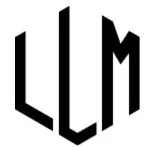
Top Cold Email Agencies
In 2025, cold emails average 40–60% open rates but only 1–5% reply rates, while highly personalized campaigns see up to 40% replies, underscoring quality over volume.
Top Cold Email Agencies specialize in creating and executing highly personalized outreach campaigns that help businesses generate leads, book meetings, and boost sales. These agencies combine data research, targeted messaging, and proven strategies to reach the right prospects at the right time. From list building and copywriting to A/B testing and analytics, they handle every aspect of cold email marketing to ensure high deliverability and strong conversion rates. Whether you’re a startup looking to scale or an enterprise targeting niche markets, partnering with a professional cold email agency can streamline your outreach and drive meaningful business growth.
List of the Best Cold Email Marketing Agencies | Top Cold Email Agencies in the World

-
Employees: 10 to 49
-
Min. Project amount: $1,000+
-
Country: Ahmedabad, India

Minimum Code
-
Employees: 0 to 10
-
Min. Project amount: $5,000+
-
Country: München, Germany

Apptage
-
Employees: 101 to 250
-
Min. Project amount: $5,000+
-
Country: South Jordan, USA

Bimitry
-
Employees: 11 to 50
-
Min. Project amount: $1,000+
-
Country: Oklahoma City, USA

RIZZNART
-
Employees: 11 to 50
-
Min. Project amount: $1,000+
-
Country: Sandy,USA

jiWeb Technologies
-
Employees: 101 to 250
-
Min. Project amount: Undisclosed
-
Country: Mohali, India

Alpha eBook
-
Employees: 0 to 10
-
Min. Project amount: Undisclosed
-
Country: Rajkot, India

FlashIT NYC
-
Employees: 50 to 100
-
Min. Project amount: Undisclosed
-
Country: New York, USA

LLM Software
-
Employees: 11 to 50
-
Min. Project amount: Undisclosed
-
Country: Dallas, TX

Quickway Infosystems
-
Employees: 11 to 50
-
Min. Project amount: $1,000+
-
Country: Noida, India
1.What Services Should I Expect from a Top Cold Email Agency?
A top cold email agency offers end-to-end solutions to help you reach your target audience, engage them effectively, and convert cold prospects into qualified leads. These services are designed to optimize both strategy and execution for measurable business growth.
🎯 1. Strategic Campaign Planning
Agencies begin with a deep discovery process to understand your goals, target market, industry, and sales funnel.
They’ll typically provide:
ICP (Ideal Customer Profile) development
Campaign planning & sequencing
Outreach timeline and goal setting
💡 A solid strategy ensures cold emails are sent with purpose — not guesswork.📝 2. Cold Email Copywriting & Messaging
Crafting persuasive, non-spammy messages is at the heart of any cold email campaign. Top agencies deliver:
Personalized, value-driven messaging
Subject lines that boost open rates
CTAs that drive replies and conversions
Variants for different buyer personas
💡 The right tone, structure, and timing significantly influence response rates.
📬 3. Deliverability Optimization
Getting into the inbox is just as important as the message itself. Agencies will ensure:
Email warm-up and domain setup
SPF, DKIM, and DMARC configuration
Avoidance of spam triggers and blacklists
Monitoring sender reputation
💡 Top agencies often use tools like Mailreach, Lemwarm, or Instantly to build deliverability strength.
📇 4. Lead Sourcing & Prospect List Building
Agencies help you identify qualified leads using tools, databases, and research. They offer:
Targeted B2B list building
Filtering based on roles, industries, revenue, tech stack, etc.
Verified contact data (email, LinkedIn, phone)
💡 Quality data fuels your outreach success — poor leads = poor results.
🧪 5. A/B Testing & Optimization
Top-performing agencies continuously test and refine:
Subject lines
Email body content
Sending times
Follow-up cadences
They track key metrics such as open rates, reply rates, bounce rates, and conversions to improve results.
💡 Ongoing testing is essential to boost performance and avoid campaign fatigue.
📊 6. Reporting & Performance Analytics
You’ll receive regular reports that include:
Campaign KPIs (open, click, reply, conversion rates)
ROI metrics
Lead scoring & qualification
Strategic insights for future campaigns
💡 Clear, actionable data helps you scale what works and fix what doesn’t.
2.What services do custom software development companies provide?
High deliverability is critical to the success of a cold email campaign. Even the best copy won’t matter if your emails land in spam. Top cold email agencies follow a multi-step process to ensure your messages reach the inbox and stay compliant with email best practices.
🔧 1. Technical Setup & Authentication
Deliverability starts with properly setting up your domain and email environment. Agencies typically:
Set up and verify SPF (Sender Policy Framework)
Configure DKIM (DomainKeys Identified Mail)
Enable DMARC (Domain-based Message Authentication, Reporting & Conformance)
Use a custom sending domain or subdomain
💡 These steps signal to email providers that you’re a trustworthy sender.
🔥 2. Email Warm-Up & Reputation Building
New domains or cold email accounts need to be warmed up gradually to avoid red flags. Agencies use tools and strategies to:
Gradually increase sending volume
Interact with warm-up emails (opens, replies)
Maintain consistent sending behavior
💡 Tools like Mailreach, Lemwarm, or Instantly automate this process.
🚫 3. Avoiding Spam Triggers in Content
Agencies use clean, value-based messaging that avoids language and formatting that spam filters flag. They avoid:
Overuse of CAPS or exclamation marks
Spammy words like “free,” “urgent,” “guaranteed,” etc.
Too many links or images
💡 Balance is key — professional tone + clear CTA = inbox-safe email.
📧 4. Sending From Reputable Email Addresses
Rather than blasting from a corporate domain, top agencies often:
Use dedicated sending domains
Rotate between multiple email accounts to stay under provider limits
Use tools to monitor bounce and complaint rates
💡 Multiple inboxes reduce risk and help maintain domain health.
🧼 5. Clean Contact Lists & Bounce Rate Control
Deliverability also depends on targeting valid and active email addresses. Agencies will:
Verify emails before sending
Regularly update and clean prospect lists
Remove hard bounces, unsubscribes, and complaints
💡 Low bounce rates signal quality outreach and help avoid blacklisting.
📊 6. Monitoring Deliverability Metrics
Top agencies continuously track performance through:
Open rates and reply rates
Bounce and spam complaint rates
Inbox placement monitoring (not just delivery)
💡 If issues arise, they adjust tactics before it impacts your domain reputation.
3.Can cold email campaigns be customized for my specific industry or target audience?
Yes — and they should be. Personalization and relevance are the core drivers of engagement in cold email campaigns. A generic message gets ignored, while a tailored email feels more human, trustworthy, and relevant to the recipient’s needs.
🧠 1. Industry-Specific Messaging
Top cold email agencies research your industry’s tone, challenges, and buyer behavior to craft campaigns that resonate.
For example:
A campaign for SaaS decision-makers may focus on product demos and pain-point solving.
One for real estate agents may emphasize leads, listings, or time-saving automation.
💡 Using industry jargon and relevant pain points increases credibility and response likelihood.
👤 2. Target Audience Segmentation
Agencies don’t just blast your entire list with the same email. They segment contacts by:
Job title or function (e.g., CEO vs. Marketing Manager)
Company size or industry
Location, tech stack, or buying stage
Each segment gets personalized content tailored to what matters most to them.
✍️ 3. Hyper-Personalized Copy & Variables
Modern cold email tools allow agencies to insert dynamic fields like:
First name, company name, role, recent achievements
Personalized pain points or competitor references
Custom CTAs based on buyer journey
💡 Personalization boosts response rates significantly, often by over 20–40%.
🛠️ 4. Customized Sequences & Follow-Ups
Follow-ups aren’t copy-paste reminders. Agencies craft value-driven sequences that evolve:
First email: Problem + offer
Second: Case study or success story
Third: Social proof or urgency
Final: Breakup email or soft CTA
💡 Customized sequences reflect real-world conversations, not robotic chases.
📊 5. Testing and Optimization by Segment
Agencies track performance per segment, not just overall. This allows:
Tailored adjustments to messaging
Retargeting based on industry behavior
Scaling what works for one vertical to others
✅ Conclusion:
Yes, cold email campaigns can — and must — be tailored to your specific industry and audience to maximize effectiveness, increase credibility, and drive conversions.
4.How do I measure ROI from cold email marketing campaigns?
Measuring the Return on Investment (ROI) of your cold email campaigns is critical to understanding their effectiveness and scaling what works. ROI isn’t just about opens or replies — it’s about how those interactions lead to qualified leads, conversions, and revenue.
🔢 1. Define ROI Clearly for Your Business
Before measuring, you need to know what “success” looks like. Cold email campaigns may aim to:
Book sales calls or demos
Generate marketing-qualified leads (MQLs)
Drive traffic to a landing page
Close actual deals
💡 Clarify whether you’re measuring direct revenue or lead pipeline value.
📬 2. Track Key Cold Email Metrics
Start by monitoring standard performance metrics:
Open Rate – Are people seeing your emails? (Good = 30–60%)
Reply Rate – Are they engaging? (Good = 5–15%)
Bounce Rate – Are your emails reaching inboxes? (Keep < 3%)
Click-Through Rate (CTR) – Are they clicking your links?
Conversion Rate – Are leads booking meetings or taking action?
💡 High open/reply rates with low conversions may indicate weak CTAs or irrelevant targeting.
🔄 3. Assign Value to Conversions
To measure ROI accurately, assign a monetary value to your goals, such as:
A booked sales call = $X in average lead value
A closed deal = Average Customer Lifetime Value (LTV)
💡 Use historical data or benchmarks to estimate the worth of each conversion.
📊 4. Calculate ROI with a Simple Formula
Here’s a basic ROI formula:
ROI = [(Revenue from Campaign – Cost of Campaign) / Cost of Campaign] × 100
Example:
Campaign cost: $2,000
Revenue from conversions: $10,000
ROI = [(10,000 – 2,000) / 2,000] × 100 = 400% ROI
⚙️ 5. Use CRM & Analytics Tools
Top agencies integrate cold email tools with:
CRMs (like HubSpot, Salesforce) to track pipeline & deals
UTM Parameters to track clicks via Google Analytics
Calendly & booking tools to attribute meetings to campaigns
💡 These integrations offer full-funnel visibility — from email to deal closed.
📅 6. Evaluate Long-Term Impact
Not every ROI is immediate. Cold outreach often builds:
Brand awareness
Pipeline momentum
Future opportunities from nurtured leads
Tracking over weeks or months gives a more accurate ROI picture, especially for B2B or high-ticket services.
✅ Conclusion:
To measure cold email ROI, combine campaign metrics (open/reply/conversion rates) with revenue attribution tools and clearly defined goals. When tracked correctly, cold email can yield one of the highest ROI channels in your outreach stack.



